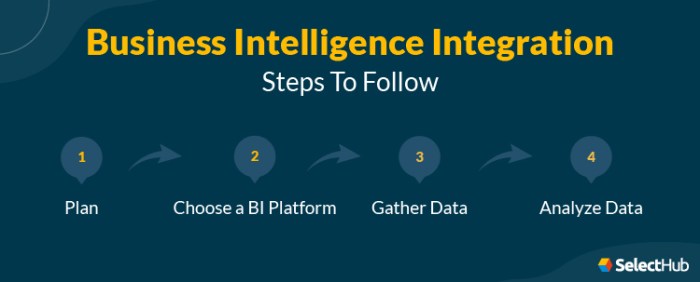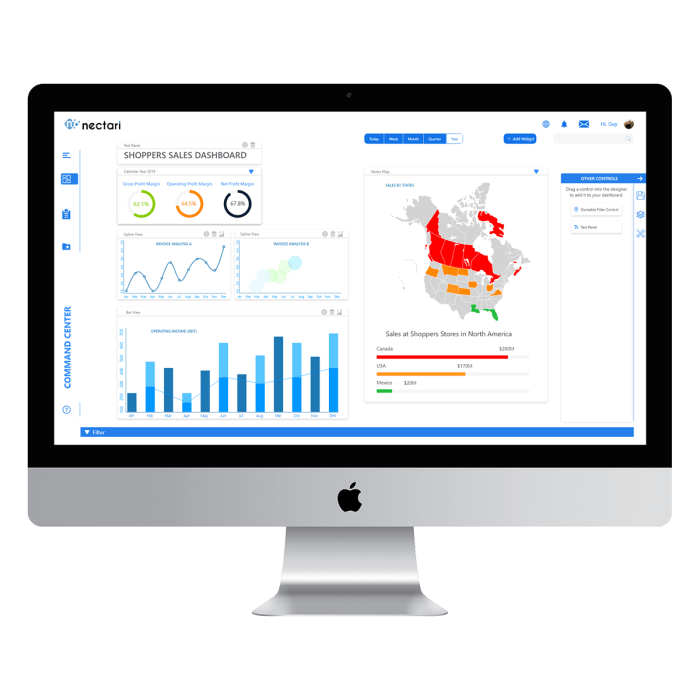Business intelligence integration is a vital process that empowers organizations to harness data effectively, transforming it into actionable insights. By combining various data sources and technologies, businesses can achieve a clearer understanding of their operations, leading to informed decision-making and strategic planning.
This integration not only streamlines data accessibility but also enhances reporting capabilities, enabling organizations to respond swiftly to market trends and challenges. As companies navigate an increasingly data-driven landscape, mastering business intelligence integration becomes essential for maintaining a competitive edge.
Understanding Business Intelligence Integration
Business intelligence (BI) integration is a crucial aspect of modern organizations that focuses on the combination of data from various sources to enable informed decision-making. This integration process synthesizes data, extracts insights, and presents them in a comprehensible manner, ultimately driving strategic initiatives and operational improvements. Understanding the components and technologies at play in BI integration is essential for organizations seeking to leverage their data effectively.
Concept and Importance of Business Intelligence Integration
Business intelligence integration encompasses the processes and technologies that enable organizations to combine and analyze data from multiple sources. This integration is vital as it provides a holistic view of the business environment, allowing for timely and accurate decision-making. Organizations that successfully integrate their BI systems gain a competitive edge by transforming raw data into actionable insights.
Components of Business Intelligence Integration

The main components of business intelligence integration include:
- Data Sources: Various internal and external sources that provide the raw data necessary for analysis, including databases, CRM systems, and social media.
- ETL Processes: Extract, Transform, Load (ETL) processes are essential for collecting data, cleaning it, and loading it into a data warehouse or BI tool.
- Data Warehousing: A centralized repository that stores integrated data, allowing for efficient reporting and analysis.
- Analytics Tools: Software solutions that provide visualization, reporting, and analysis capabilities to interpret the integrated data.
Key Technologies in Business Intelligence Integration
Several key technologies facilitate business intelligence integration, including:
- Cloud-Based Solutions: These technologies offer scalable and flexible BI integration options, enabling data access from anywhere.
- On-Premise Systems: In contrast, on-premise solutions provide organizations with control over their data and infrastructure.
- Data Lakes: A newer approach that allows for the storage of vast amounts of unstructured data, enabling deeper analytics capabilities.
- Machine Learning and AI: Technologies that enhance data analysis by identifying patterns and generating predictive insights.
Benefits of Business Intelligence Integration
Integrating business intelligence into organizational processes brings numerous advantages that can enhance overall performance. Here are some key benefits of BI integration:
- Improved Decision-Making: Integrated BI systems facilitate access to real-time data and analytics, leading to faster and more informed decisions.
- Enhanced Data Accessibility: Centralized data repositories ensure that stakeholders can easily access the information they need for reporting and analysis.
- Streamlined Reporting: Automated reporting features reduce manual effort, allowing teams to focus on interpreting data rather than gathering it.
Examples of Improved Decision-Making
Organizations that effectively integrate BI systems have demonstrated significant improvements in decision-making. For instance, a retail company that utilized integrated BI tools was able to analyze customer purchasing patterns, resulting in targeted marketing campaigns that increased sales by 30%. Similarly, a healthcare provider that integrated its patient data systems improved patient outcomes by enabling timely interventions based on real-time data insights.
Challenges in Business Intelligence Integration
Despite its benefits, organizations often face challenges when integrating business intelligence solutions. Some common obstacles include:
- Data Quality Issues: Poor data quality can severely hinder BI integration efforts, leading to inaccurate analysis and misguided decisions.
- Resistance to Change: Employees may resist adopting new BI systems due to a lack of understanding or fear of disruption to established processes.
- Integration Complexity: Integrating disparate systems and data sources can be technically challenging and resource-intensive.
Impact of Data Quality on Integration Efforts
Data quality directly affects the effectiveness of business intelligence integration. Inaccurate, incomplete, or outdated data can lead to flawed insights, which ultimately undermine organizational strategies. Organizations must prioritize data governance to ensure that the data being integrated is reliable and useful.
Best Practices for Business Intelligence Integration
Implementing business intelligence integration effectively requires adherence to best practices. Some key strategies include:
- Stakeholder Engagement: Involve key stakeholders from various departments to ensure that the BI integration aligns with organizational needs.
- Clear Objectives: Establish clear goals for the integration project, focusing on what the organization aims to achieve through BI.
- Phased Implementation: Adopt a phased approach to integration, allowing for adjustments based on feedback and lessons learned during initial phases.
Step-by-Step Approach for Planning BI Integration, Business intelligence integration
A structured approach to planning business intelligence integration can enhance its success:
- Assess current data infrastructure and identify gaps.
- Define the scope of the integration project, including data sources and technologies to be used.
- Develop a detailed project plan, outlining timelines, resources, and responsibilities.
- Conduct a pilot test to evaluate the integration process and make necessary adjustments.
- Launch the full integration and continuously monitor and optimize the system for performance.
Tools and Technologies for Business Intelligence Integration
A variety of tools and technologies are available for effective business intelligence integration. Key solutions include:
- Tableau: A popular BI tool that offers powerful data visualization capabilities for integrated analytics.
- Power BI: Microsoft’s solution provides robust integration with various data sources and user-friendly interfaces.
- Looker: A cloud-based BI platform that enables organizations to explore and visualize their data effortlessly.
Cloud-Based vs. On-Premise Solutions
The choice between cloud-based and on-premise business intelligence integration solutions depends on organizational needs. Cloud-based solutions offer scalability and flexibility, while on-premise systems provide enhanced control over data security and compliance. Each option comes with its unique set of advantages and considerations, requiring organizations to evaluate their priorities carefully.
Role of Data Warehouses in BI Integration

Data warehouses play a critical role in business intelligence integration by serving as centralized repositories for data from various sources. They facilitate the ETL process, ensuring that data is structured and organized for easy access and analysis. This structured data enhances the overall efficiency of BI tools, leading to more accurate insights and reports.
Case Studies of Successful Business Intelligence Integration

Several organizations across different industries have successfully implemented business intelligence integration. These case studies illustrate the impact of BI on their operations:
- Financial Services: A leading bank integrated its customer data and transaction systems, enabling personalized service offerings and reducing operational costs by 20%.
- Manufacturing: A manufacturing firm utilized BI integration to optimize its supply chain management, resulting in a 15% reduction in inventory costs.
Key Factors for Success
Successful BI integration often hinges on several key factors, including strong leadership support, a clear vision for data utilization, and ongoing training for users. These elements ensure that organizations can maximize the benefits of their integrated BI systems.
Lessons Learned
Organizations that have successfully integrated business intelligence often highlight the importance of adaptability and continuous improvement. Regularly revisiting BI strategies and incorporating user feedback can help organizations refine their approach and achieve sustained success.
Final Summary
In summary, successful business intelligence integration is pivotal for organizations looking to improve their operational efficiency and decision-making processes. By overcoming common challenges and implementing best practices, businesses can unlock the full potential of their data, driving growth and innovation. The lessons learned from successful case studies serve as valuable guidelines for organizations embarking on their integration journey.
